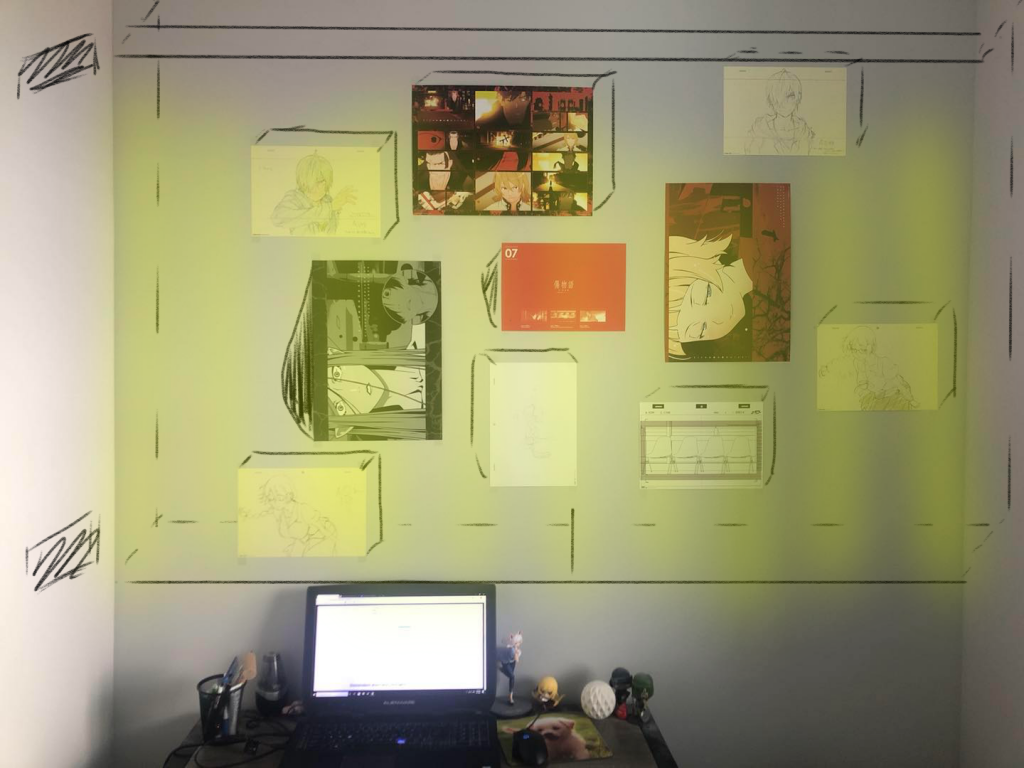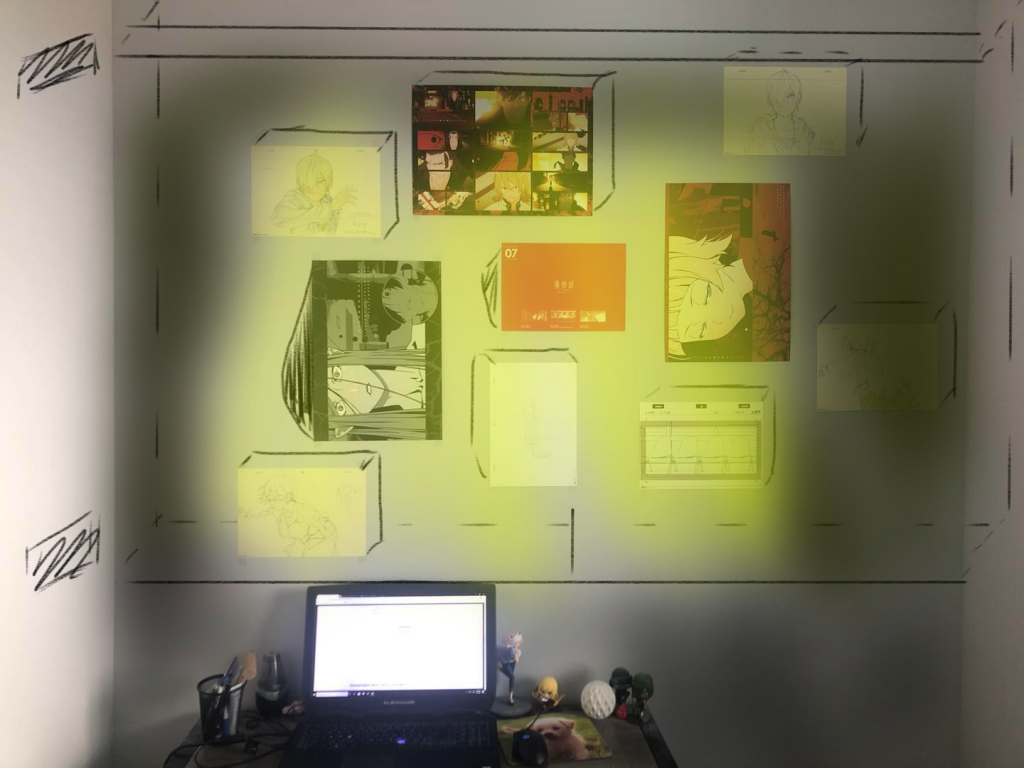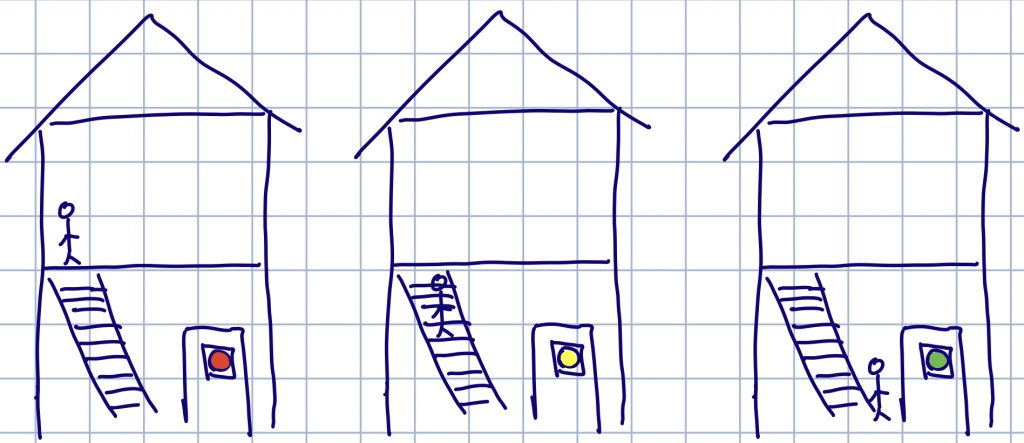Category: Assignment 2
Interactive Wall
Premise:
Even though the physical interaction between intelligent system and humans is advanced in the movie Blade Runner 2049, I did not like the austere apartment the protagonist lives in. It displays little interest in the comfort of the occupant with simple furniture and grey, industrial walls. The only meaningful interaction that occurs comes from JOI, the holographic artificial intelligent. This makes me wonder what things in our private space can bring comfort if interaction is introduced.
Nowadays people in the city live in dorms and apartments where physical space can be quite limited. Walls define the boundaries of our private space, but walls are never used as space themselves. It is used as a surface to hang or mount things. Therefore, I want to envision an interactive wall that can expand beyond physical space.
Hardware Setup:
Depth is necessary to make use of the walls as space. “Holographic display” is still a developing technology but it will give walls the needed depth to create a visual space. Such walls can be used to change the environment of the space. For example, having bamboo around the room when having breakfast. And with a touch screen, such walls can also be used in many applications such as displaying and assembling 3D objects.

Lights and speakers can be incorporated into the wall to make it more interactive. As shown in the picture below, there are two speakers on the left and lighting on the wall. Together they can create a corner or a space of cinematic experience.

Interaction:
The wall can collect data on what the user like to display at different time of the day and week. Then like a smart “wallpaper engine”, it can change the environment of the room to fit the activity of the occupant. For example, once it “learns” that I like to look at bamboo and listen to birds’ tweets during breakfast, it shows a waterfall at the breakfast time the next day.
The wall can also be more engaged in the occupant’s living habit. I, for example, am often energetic during the night and I sometimes stay up until I realize there is not enough time to sleep. Or sometimes I did not realize that it is better to rest because my body is tired. With the active change of the range of light according to time in night, the wall is able to remind and urge me to rest. In similar way, the interactive wall can create a space that “synchronizes” with the occupant.



A Truly Smart Doorbell
Problem:
Smart Doorbell’s have been around since 2013 and have improved in features over the years, but don’t utilize the range of technological advancements that we have today. Smart Doorbells have the ability to notify the owner and show video of who is at the door when the bell is rung and when motion is detected as well as store recordings to the cloud; many have two-way audio communication wherein the owner and the visitor can speak to each other; and some allow the owner to unlock the door. None of these features take much advantage of automatic responses.
Proposed Solution:
A true Smart Doorbell would be able to do all of the above features and be much more customizable. It would be able to do different actions based on both who is at the door and who is home. Given a set of pictures of approved people, such as family members and really close friends, the Smart Doorbell would be able to automatically unlock the door for them and others who are only allowed automatic entry if certain people are at home and during a certain time frame. It would also be able to recognize delivery people and solicitors and perform certain tasks based on what was chosen in the app. For example, different recordings can be automatically played to tell a delivery person where to leave the package and a solicitor to go away. Another option would be to mute the doorbell for certain types of solicitors. A truly Smart Doorbell would be fully customizable with the ability to have numerous preset responses to make the owners life more convenient.
Smart Doorbell (Catherine)
One thing that frustrates me when I ring someone else’s doorbell is that I don’t know if people inside the house has heard me ringing the doorbell. Another thing that frustrates me when someone else’s rings my doorbell is that as I’m getting the door, whoever rang the doorbell does not know that I’m coming and keeps ringing the doorbell.
Given the above two scenarios, a smart doorbell that can detect whether people inside the house are ‘on their way’ to get the door and notify the people ringing the doorbell would be helpful for both parties.
 In the sketch above, we are looking at this house that has two floors and the person inside is on the second floor. After the doorbell rings, if the person does not move to get the door, the doorbell is red and the person outside should keep ringing the bell. If the person inside is on his/her way to the door, the doorbell turns yellow so the person outside is ensured that he/she has gotten the insider person’s attention. It’s likely that the person inside gets distracted and forget about the door, so if doorbell stays yellow for too long, the person outside could ring the bell again. And finally, if the person inside is near the door already, then the doorbell turns green and the person outside can be prepared to see the door open.
In the sketch above, we are looking at this house that has two floors and the person inside is on the second floor. After the doorbell rings, if the person does not move to get the door, the doorbell is red and the person outside should keep ringing the bell. If the person inside is on his/her way to the door, the doorbell turns yellow so the person outside is ensured that he/she has gotten the insider person’s attention. It’s likely that the person inside gets distracted and forget about the door, so if doorbell stays yellow for too long, the person outside could ring the bell again. And finally, if the person inside is near the door already, then the doorbell turns green and the person outside can be prepared to see the door open.